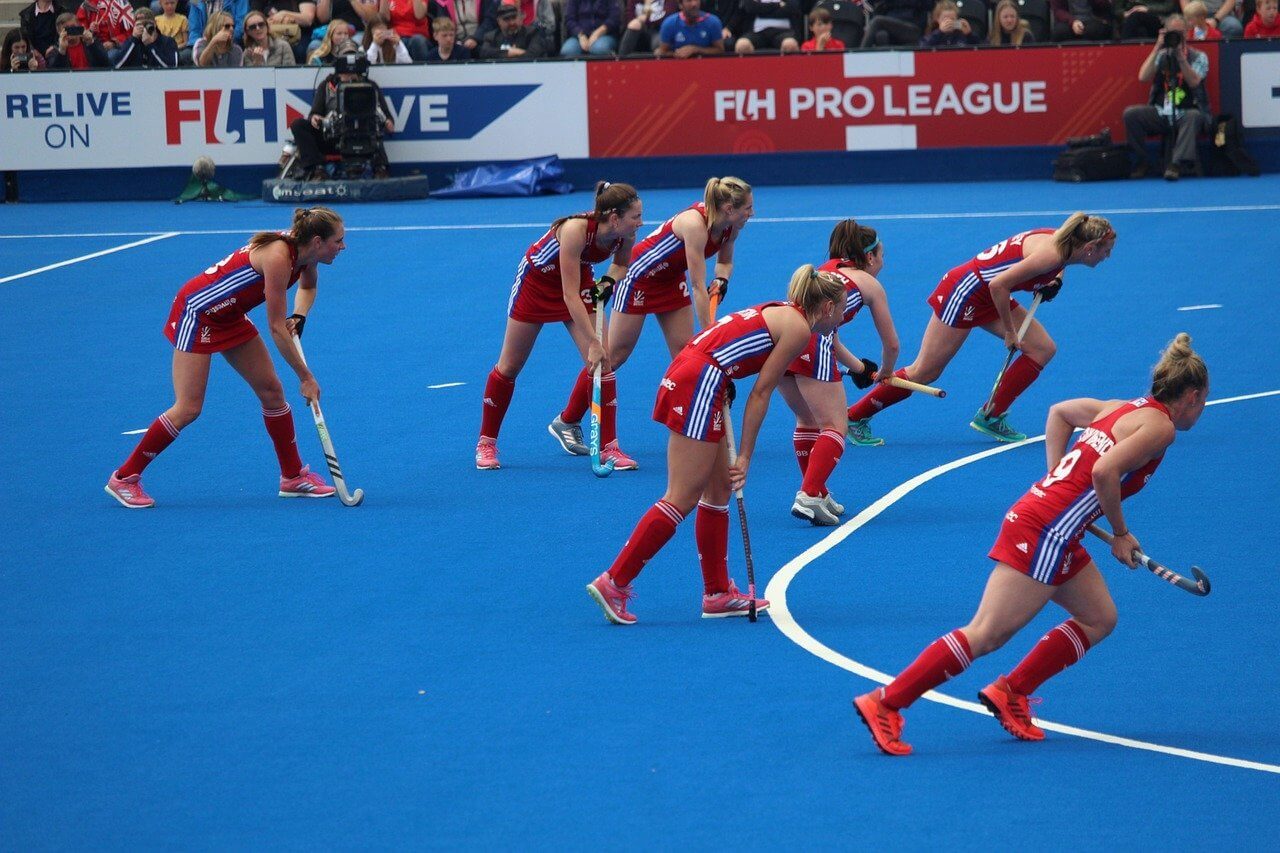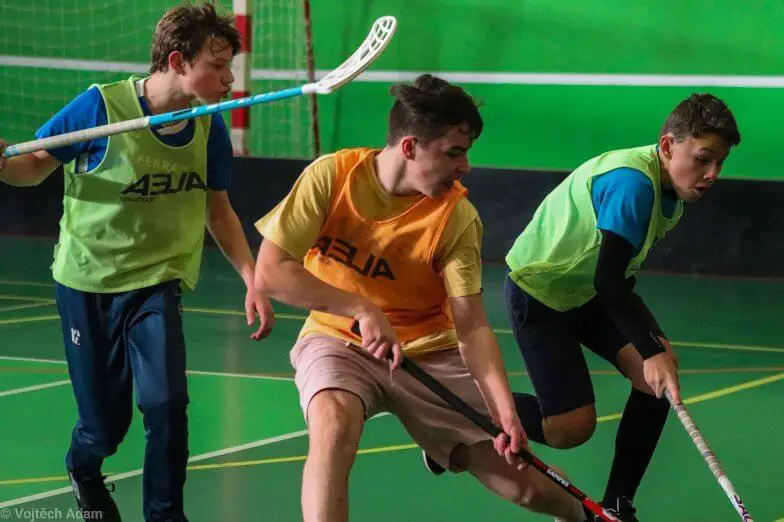How High Can You Lift Your Stick in Field Hockey?

Lifting A Field Hockey Stick
If you have ever tried to explain field hockey rules to someone, you would have discovered that this is no easy task. Some rules can be quite confusing and have changed over time. Take, for example, the question, “How high can you lift your stick in field hockey?”
A field hockey player can lift the stick in a controlled manner at any height unless this is harmful to an opponent. The intentional swinging of the stick above the shoulder is considered dangerous play and a foul. While dangerous play can be difficult to determine, basic ball contact, stick, and distance rules, together with intent, influence umpire decision-making.
If you are eager to discover field hockey rules and want to test out your knowledge while playing or watching a game, keep reading this article.
Can You Lift Your Stick in Field Hockey?
Field hockey players are allowed to lift their stick during a game. Specific criteria apply, and lifting is only permitted with consideration for another player’s safety and when it does not constitute dangerous play (source).
Let’s take a closer look at how the three crucial elements of stick, ball, and player come together in a lift.
Ready For Liftoff
While field hockey players can lift the stick, they must adhere to basic rules to prevent committing a foul. Firstly, in no instance whatsoever can a stick be raised without direct ball contact. The player must connect to the ball, either by stopping, hitting, playing, or diversion.
Secondly, only the left, flat side of the stick can be used to hit the ball. Also, while hockey sticks are made for the right hand, players can play with either hand, leaving left-handed players with a potential competitive advantage (source).
Using the stick in any potentially harmful way to other players is off-limits. You cannot touch, play, or obstruct other players’ sticks with your own. Nor is intentional swinging with the stick, especially above shoulder height, allowed, as it is considered dangerous play and a foul.
The same criteria and rules apply to the ball. A foul is committed when a ball is intentionally raised other than a shot at goal. Players, with the exception of the goalkeeper, are not permitted to use any body part to control the ball at any time (source).
Flicks and scoops are allowed, pushing the ball up above the turf with the hockey stick raised, as long as it does not put other players in danger. As a general rule of thumb, balls above the knee result in a foul verdict from the umpire unless done by accident.
How High Can You Lift Your Stick?
In 2014 the International Hockey Federation (FIH) adjusted the Rules of Hockey, allowing players to lift the hockey stick at any height. This includes above the shoulder, as long as executed in a controlled way without danger to surrounding players.
The main reason for allowing players to raise their stick to any height is to limit minute interference from umpires with potentially profound outcomes. It is also to reward good ball control through dynamic and skillful play on the field.
Since the rule does not offer players unrestricted authority, we have outlined two common scenarios that determine the stick’s permitted height.
When above the Shoulder Is Allowed
The most common scenario where stick lifting occurs above the shoulder and is allowed is to fend off or stop a shot on goal. Once a legitimate play with a raised stick has taken place on the field, the opposing team’s player must keep a distance of five yards to allow play to continue safely.
When above the Shoulder Is Not Allowed
The most critical factor influencing when lifting above the shoulder is not allowed is intent. If the umpire considers the stick lift as intentional, a penalty corner will be given to the opposing team and a yellow card to the offender.

Can All Players Lift Their Hockey Sticks?
All players in field hockey can lift their hockey sticks. However, different restrictions and permissions apply depending on where the player is positioned on the field.
Goalkeepers
The least amount of restrictions apply to goalkeepers when it comes to lifting their hockey sticks. They can use their stick in any way to prevent a goal as long as it does not lead to dangerous play, even outside the scoring circle.
Apart from lifting their hockey stick, goalkeepers can use any body part, including feet, to defend the goal within the confinement of the circle. Contrary to other field positions, they can kick the ball within the scoring circle, as long as it is unintentional and causes no advantage.
Defenders or Fullbacks
Prior to the 2014 FIH rule change, defenders, also known as fullbacks, were already allowed to lift their hockey stick above shoulder height to block, stop, or avert a shot on goal.
This remains the case under the new regulations. Defenders also tend to lift their stick during overheads, raising the ball over the opposition, in an attempt to reach their teammate (source).
Midfielders or Halfbacks
Midfielders are more restricted in their ability to lift their hockey stick during play. This is caused by the relatively close proximity to their opponent, causing a heightened risk of dangerous play. Just like defenders, these halfbacks use overheads to reach their teammates by lifting their hockey sticks.
Forwards
Forwards have to tread carefully when it comes to lifting their sticks. They are usually surrounded by an opponent in close proximity. The most common lifting of their stick occurs when taking a hit at the goal (source).
When Is Lifting Your Hockey Stick Dangerous Play?
Players do not have a “carte blanche” when it comes to lifting their hockey stick during a game. To better understand what is and what is not allowed, we need to determine what constitutes dangerous play.
How Do You Determine Dangerous Play?
Even though the term is commonly thrown around in field hockey, a straightforward explanation of dangerous play is lacking, even from the FIH. This ambiguity is most likely because the implementation requires a case-by-case analysis and close-up monitoring of the umpire.
The consideration of dangerous play by an umpire is based on a few criteria. The most concrete example of dangerous play is when a player or players end up injured and hurt. In most cases, though, umpiring requires the anticipation of dangerous play and requires swift action that is both in the interest of the game and prevents injury.
Specific rules in field hockey have purposefully been created to give umpires some guidelines and tools to determine dangerous play.
Firstly, players are not allowed to lift their sticks over the heads of others. Moreover, the five yards or meters distance rule, applied when handling a falling ball with a stick, most often raised, offers clear physical boundaries to players.
The final two factors are not as easy to spot but are indeed an indication of dangerous play. Not playing the ball is by default cause for concern and a recipe for dangerous play. Lastly, the intent is a critical factor in dangerous play, and if the umpire spots intent behind a raised stick play, then it is a foul.
The Punishment
In any scenario, the punishment, where the lifting of the hockey stick is considered dangerous play, is a yellow card. As a result, the player gets suspended for a minimum of five minutes, at the umpire’s discretion, and the game is resumed with one team member short (source).
Scenario Examples
To get a better feel and understanding of what constitutes dangerous play when it comes to lifting the hockey stick, we have described two similar scenarios below.
Scenario one:
A defender on the goal line deflects a goal attempt by an opposing attacker by lifting the stick above the head. Is this allowed?
Yes, this is allowed since the defender deflects the ball with a raised stick in a legitimate move to prevent a goal.
Scenario two:
A defender on the goal line deflects a goal attempt by an opposing attacker by lifting the stick above the head. The ball is deflected in the air, and the defender takes a second swing at the ball with the stick above the shoulder. Is this allowed?
No, this is not allowed. The defender cannot take a second swing at the ball with his stick raised above the shoulder level. It is an intentional foul, preventing the opponent from possible ball possession.

Final Thoughts
Players in field hockey are allowed to raise their sticks, even above shoulder height, when done in a legitimate stick-on-ball action or to prevent a shot on goal.
The difficult task rests on umpires to closely monitor the play on the field to determine case-by-case if the stick lifting displayed constitutes dangerous play.
Set rules, such as disallowing stick interference, a minimum distance between players, the absence of ball contact, and intention influence the umpire’s decision-making when it comes to dangerous play.




